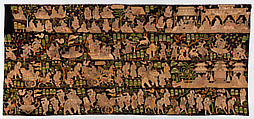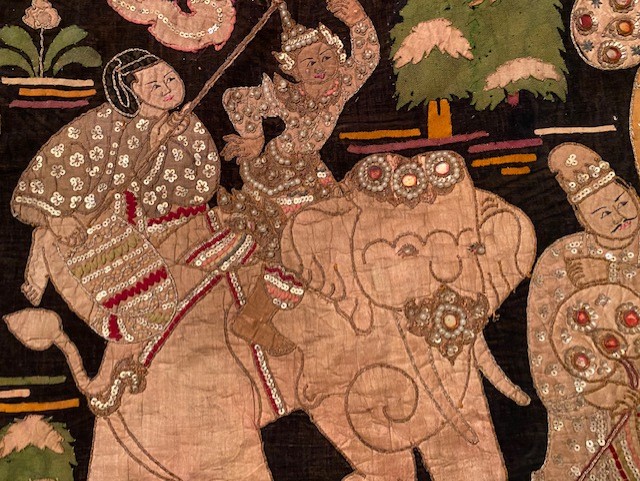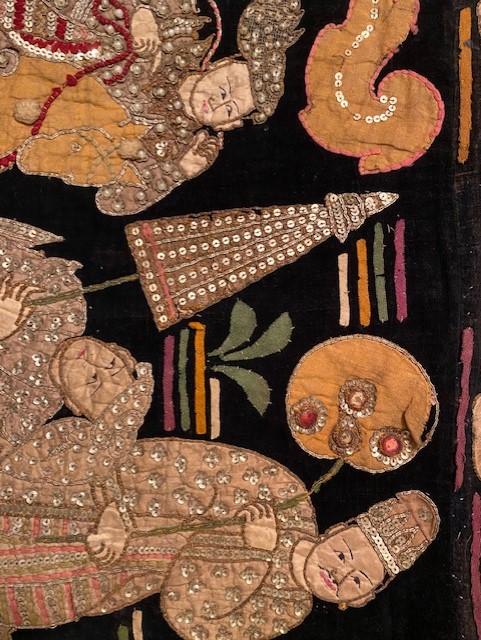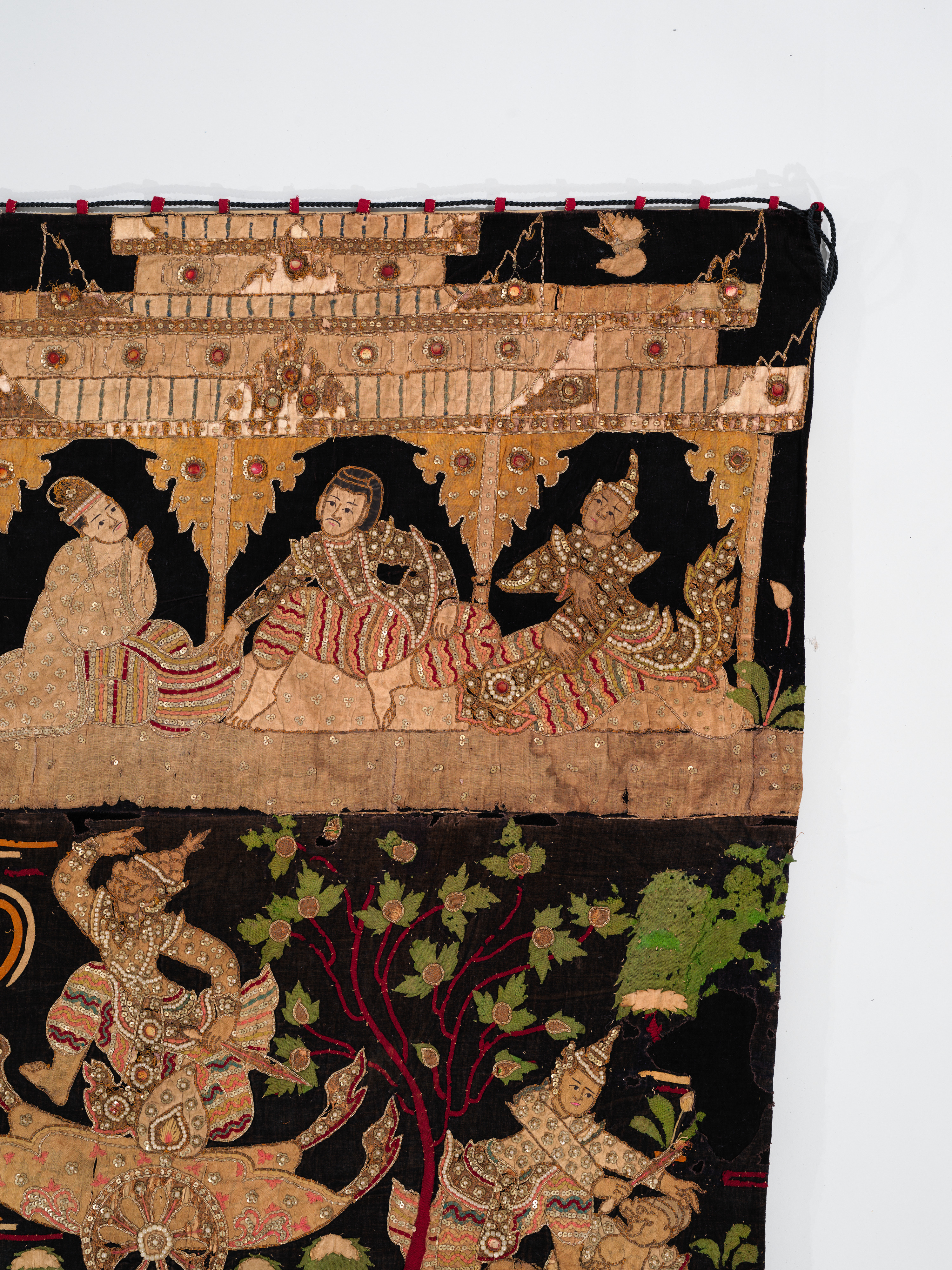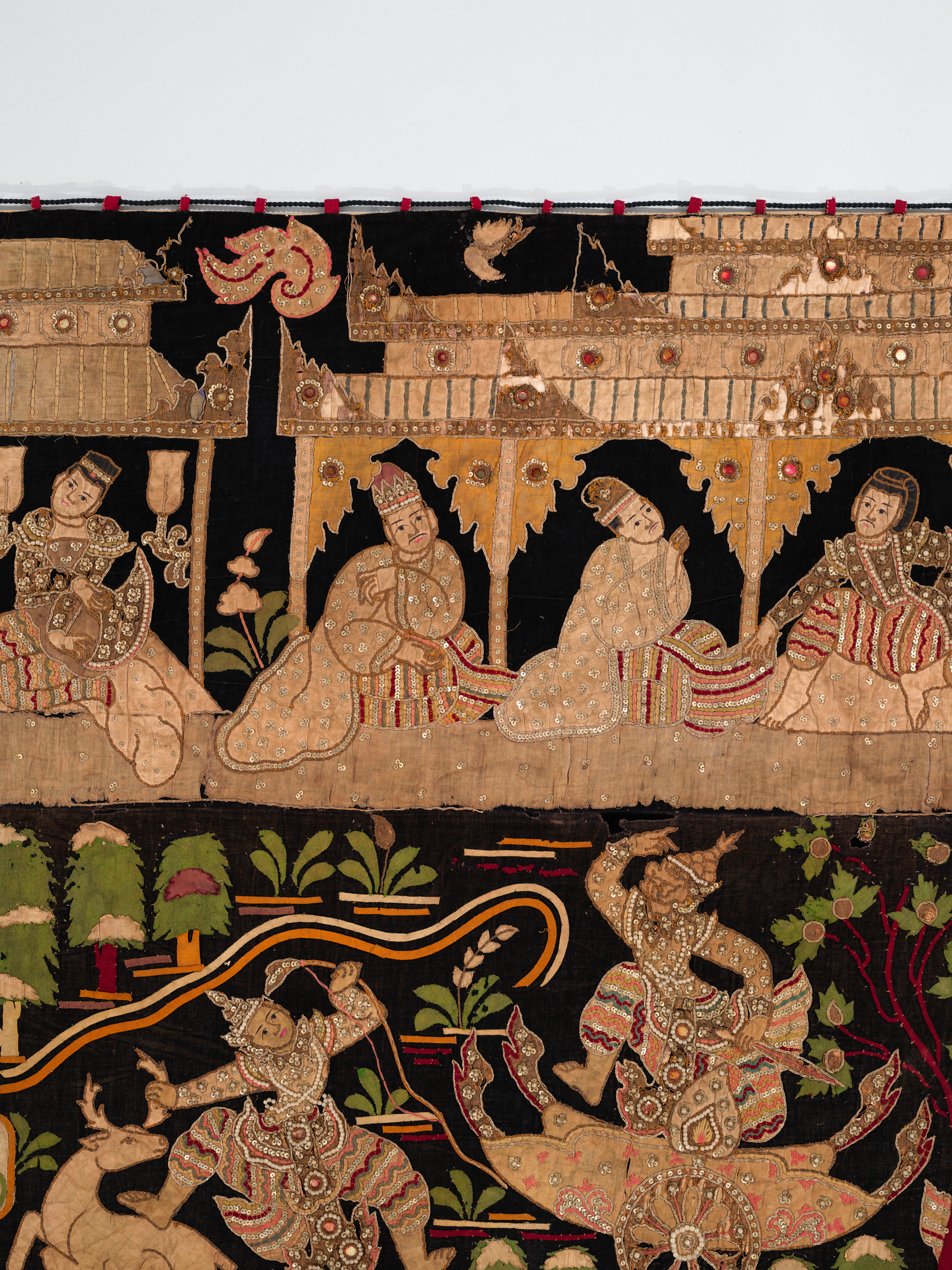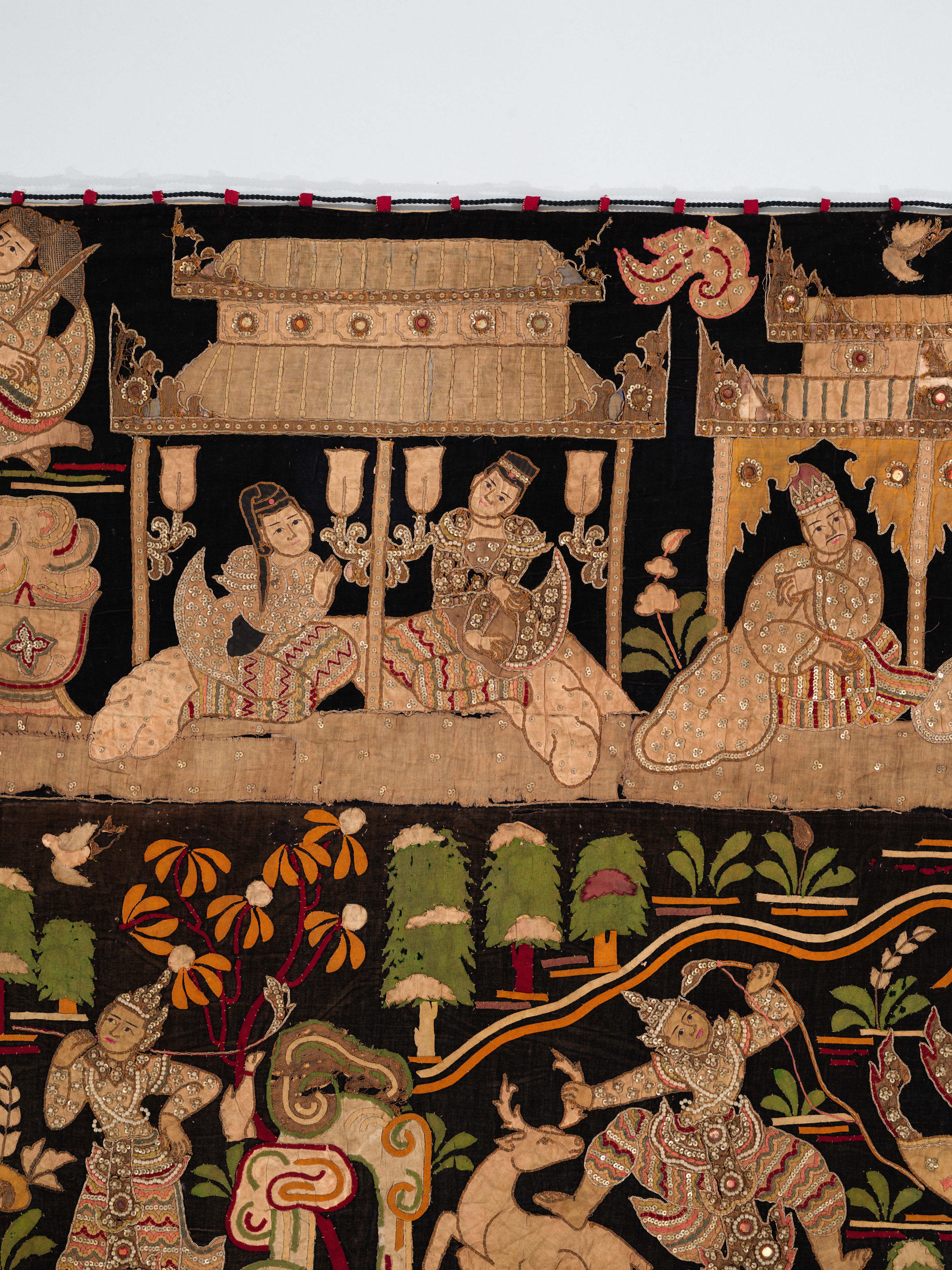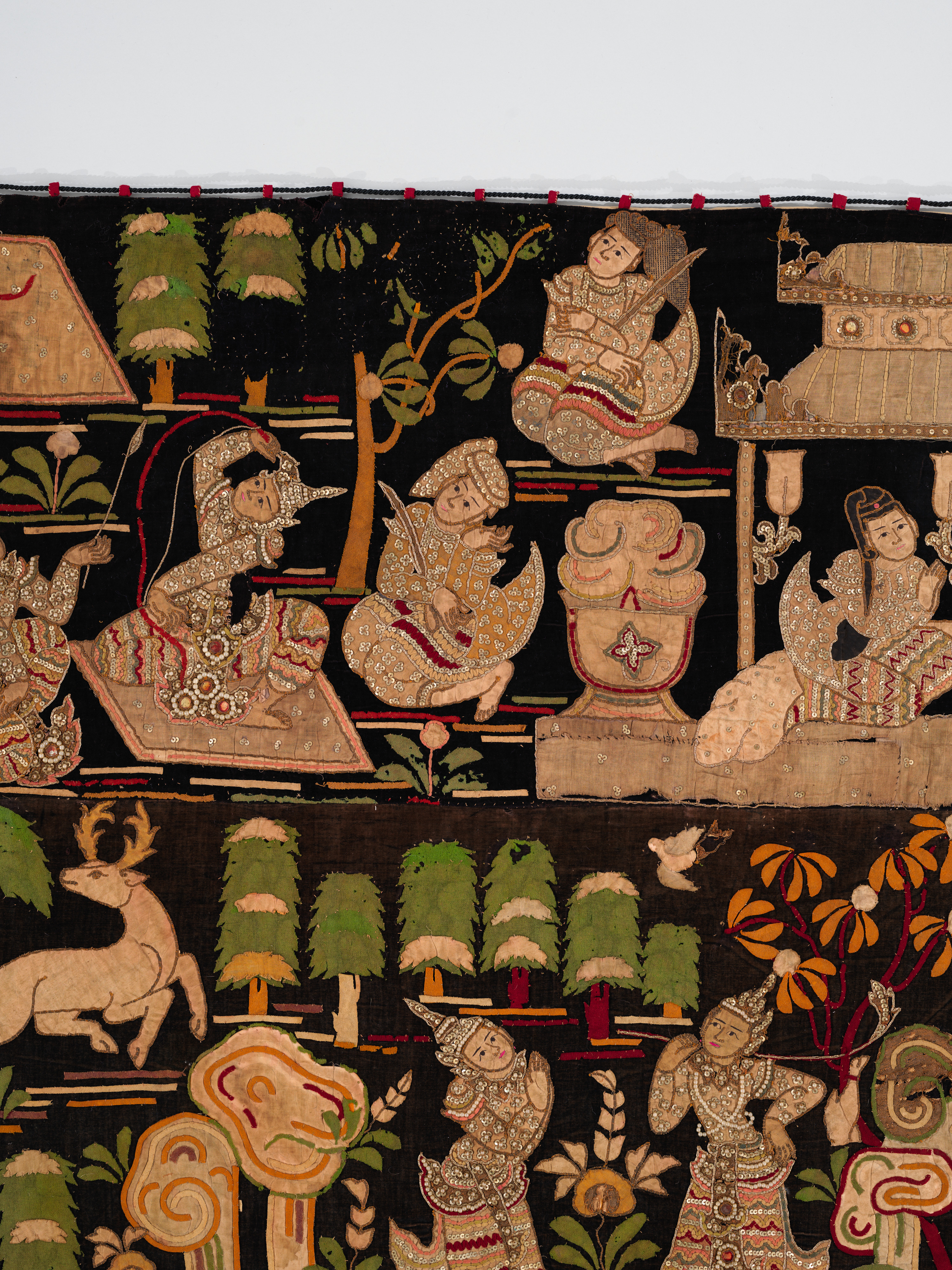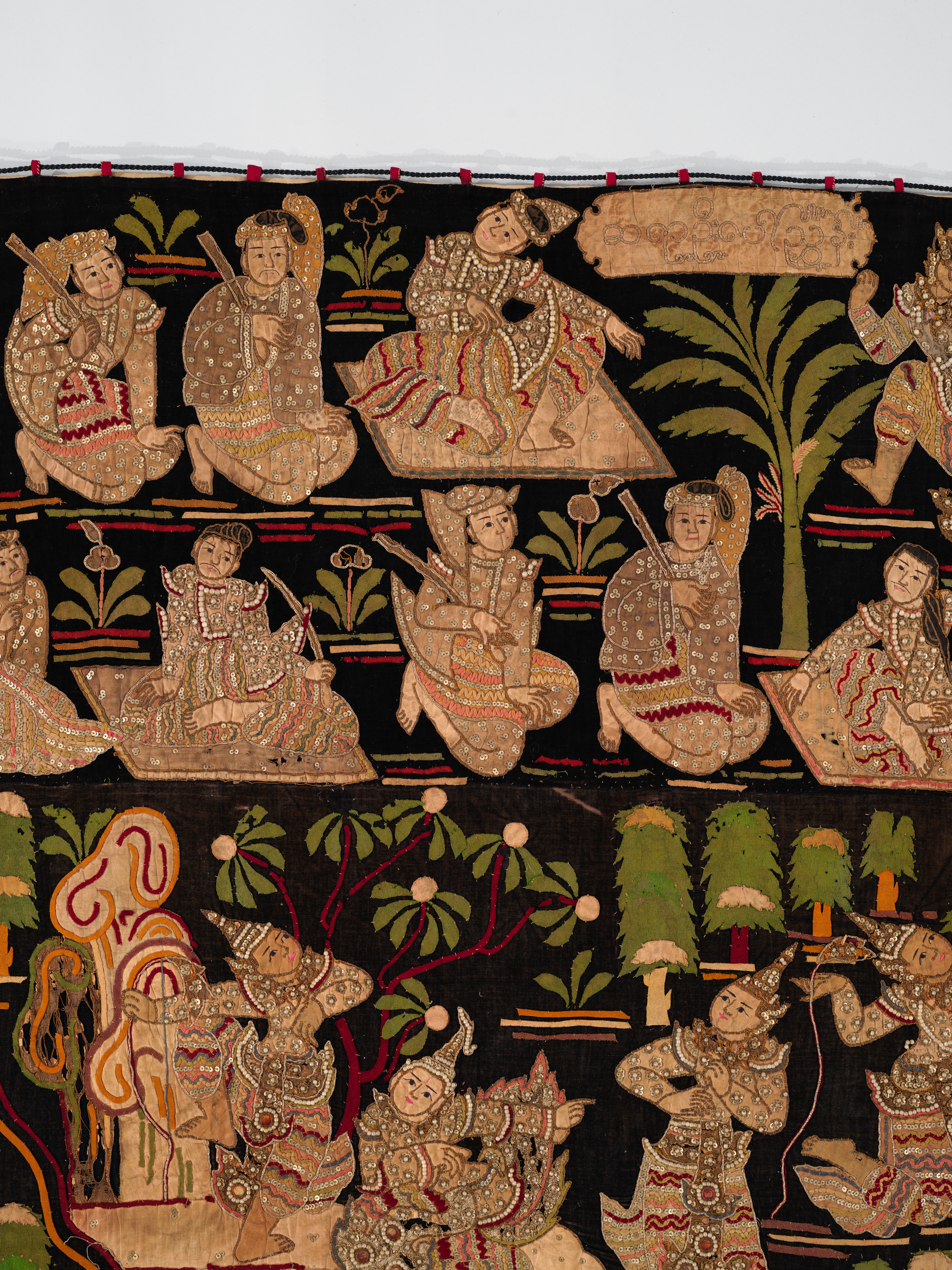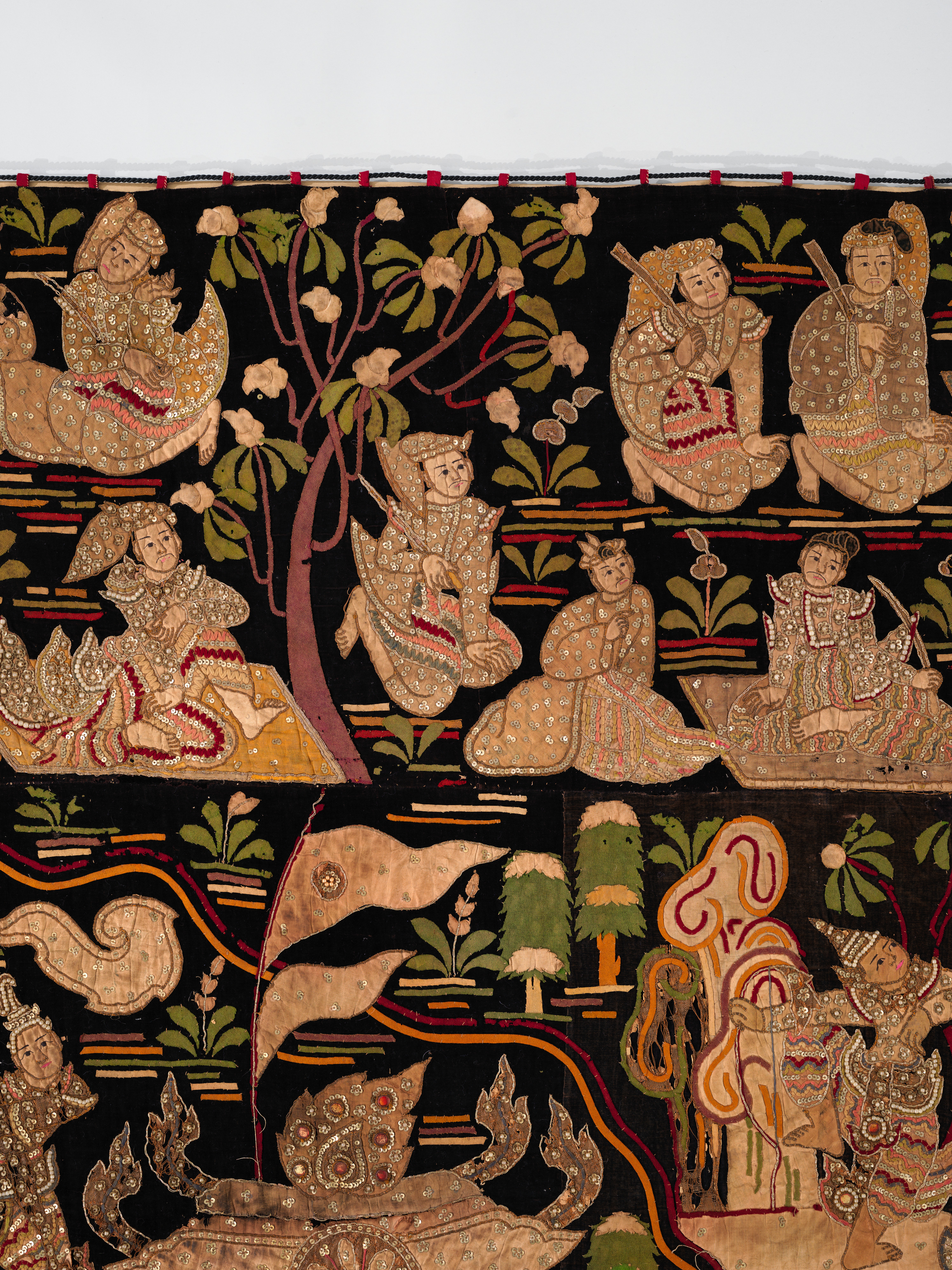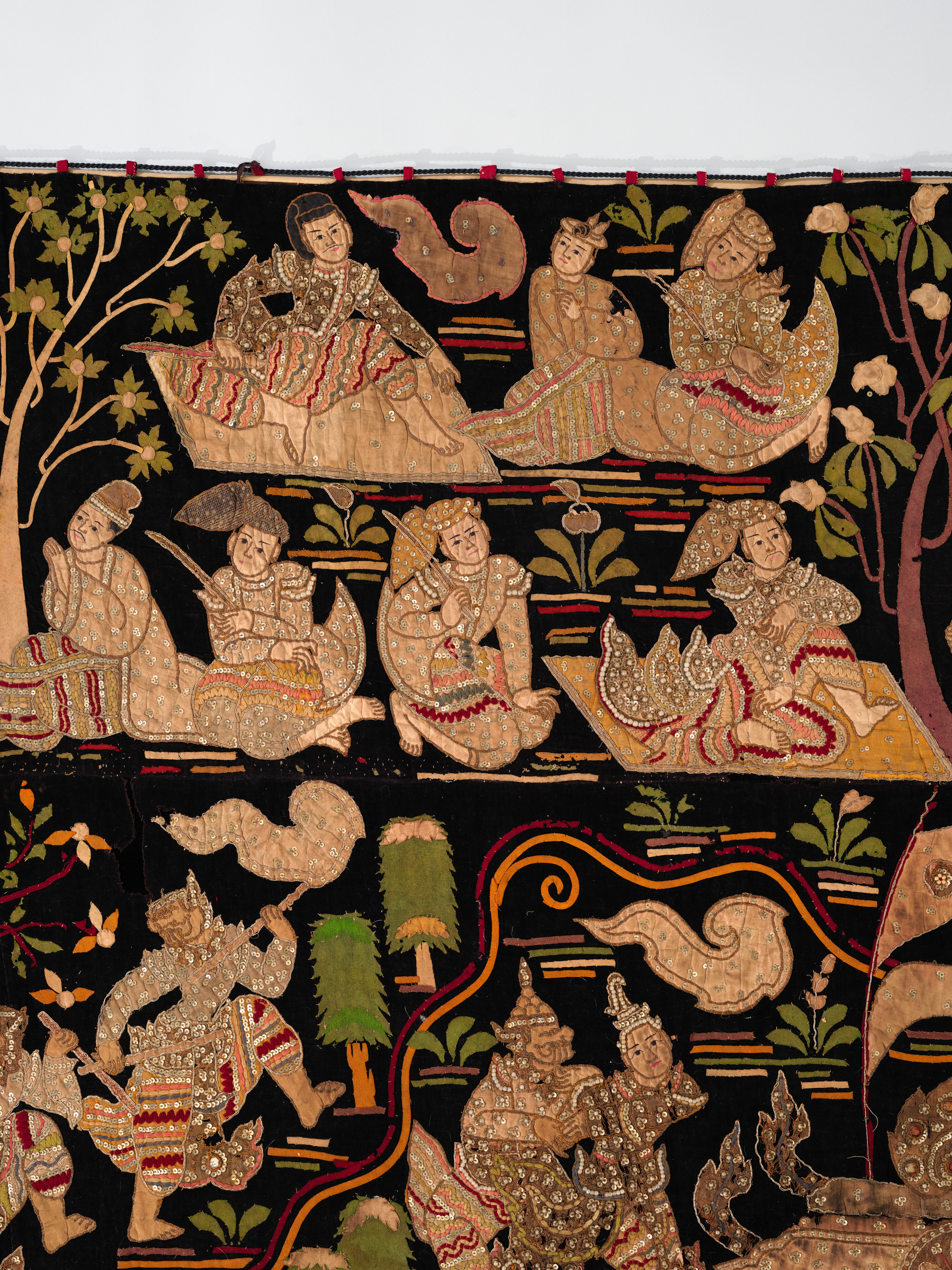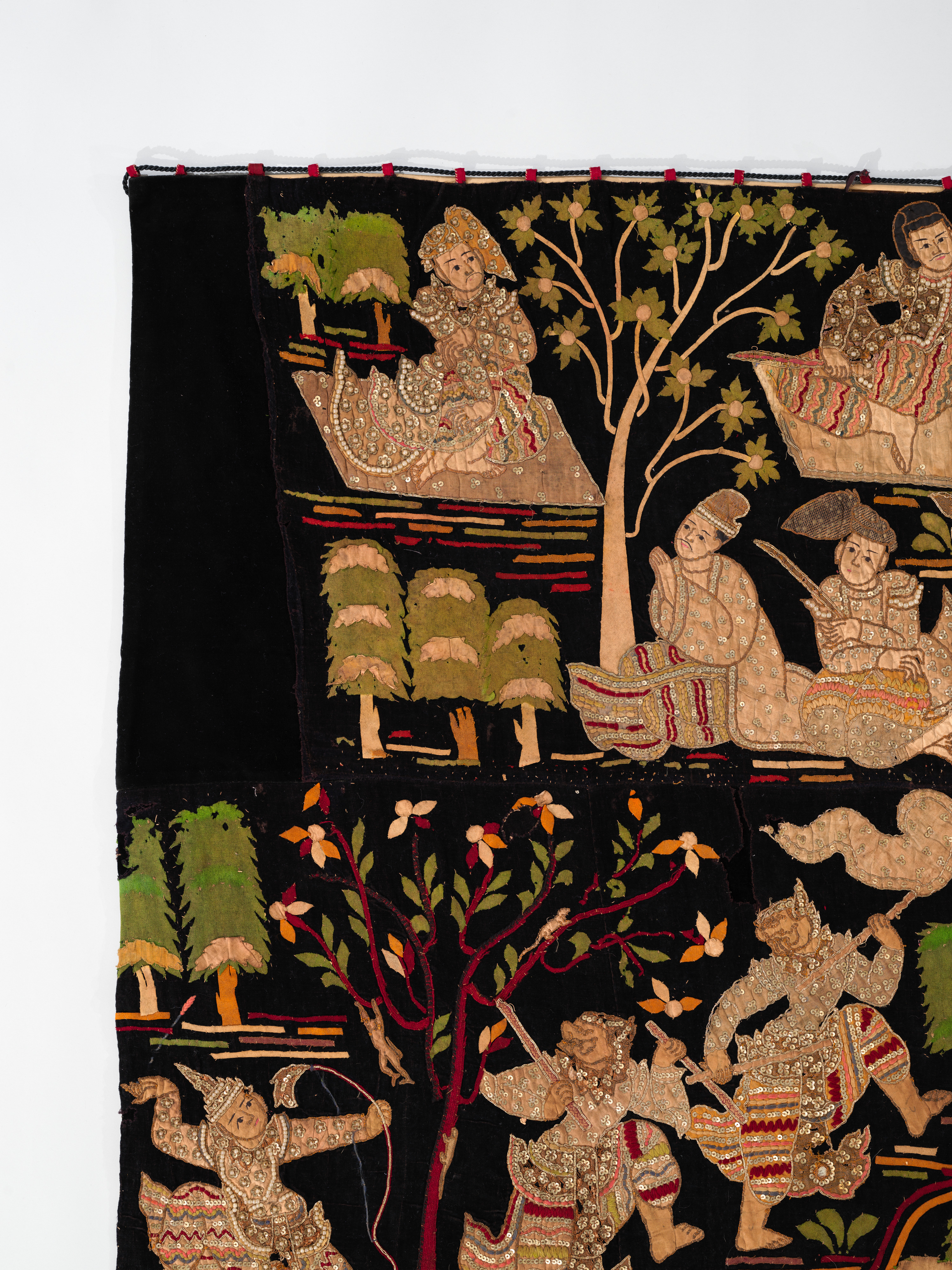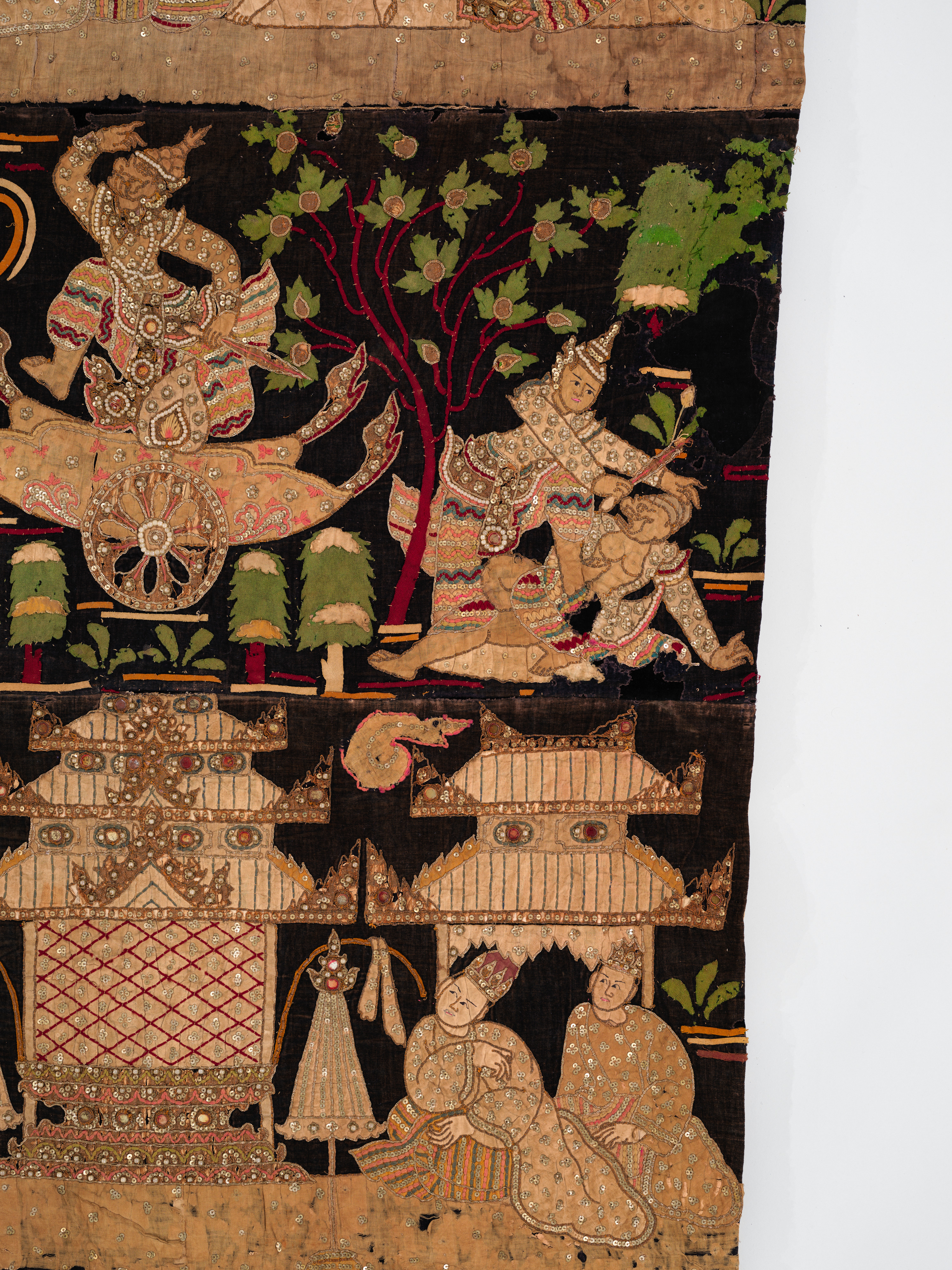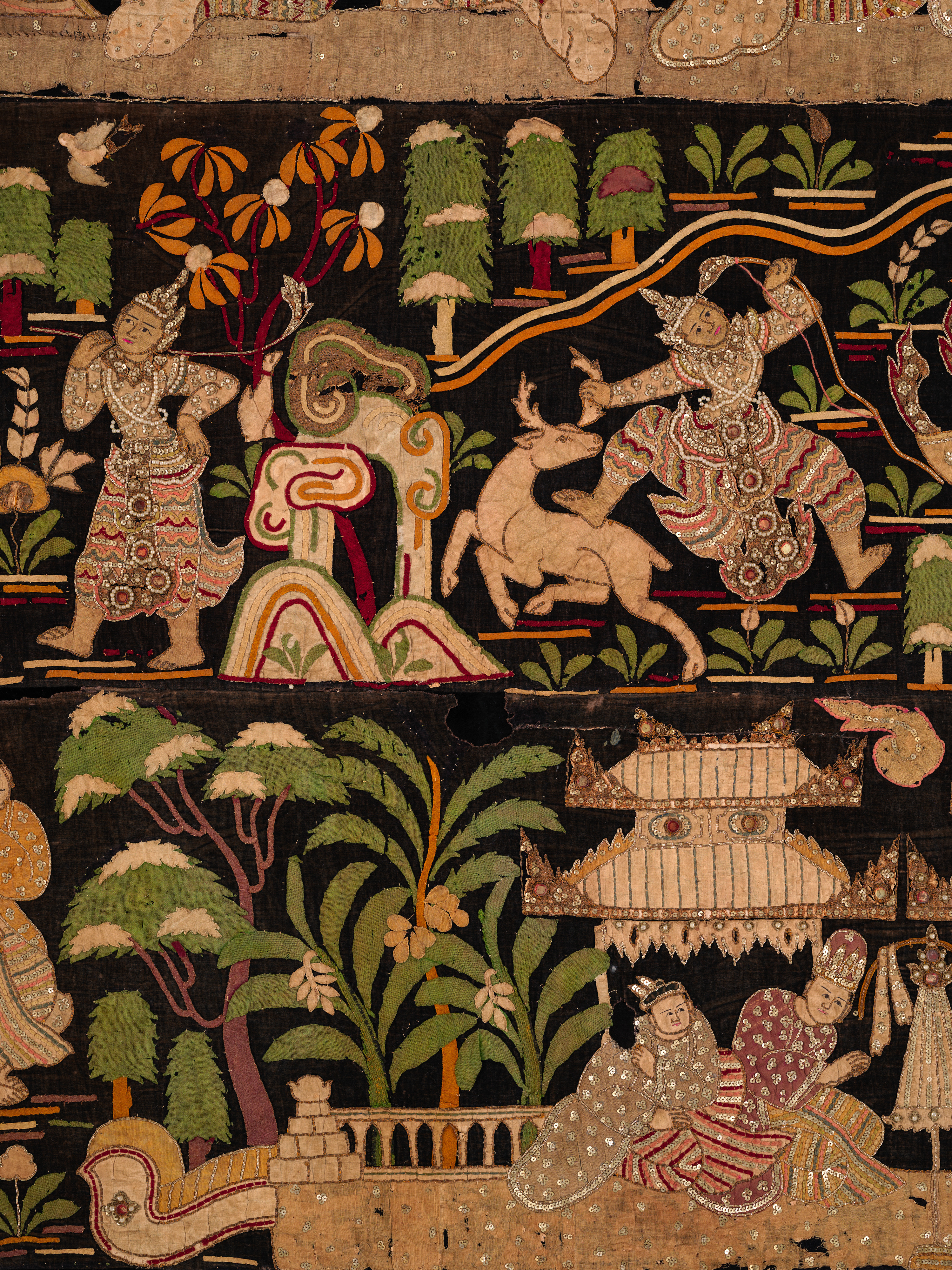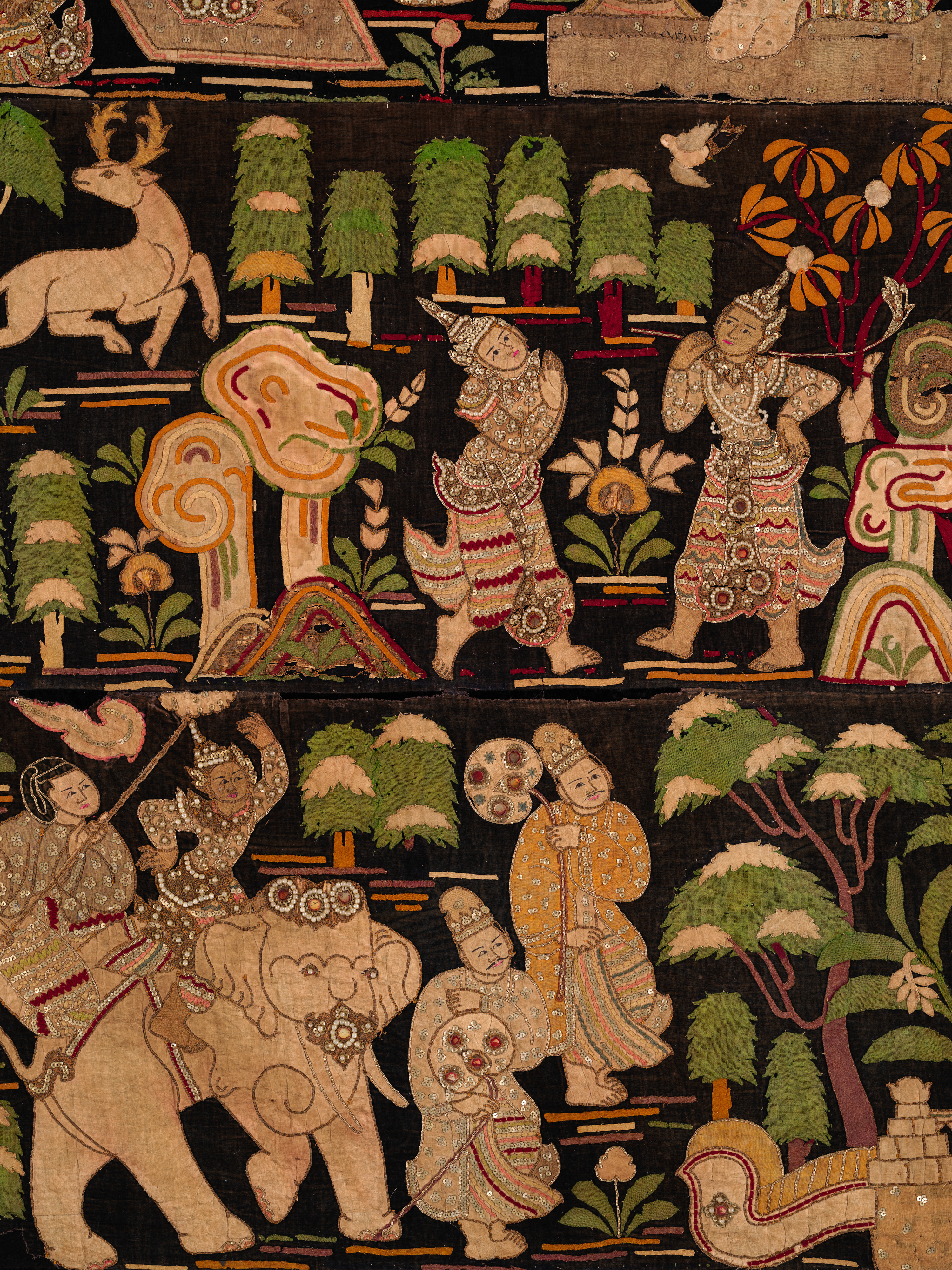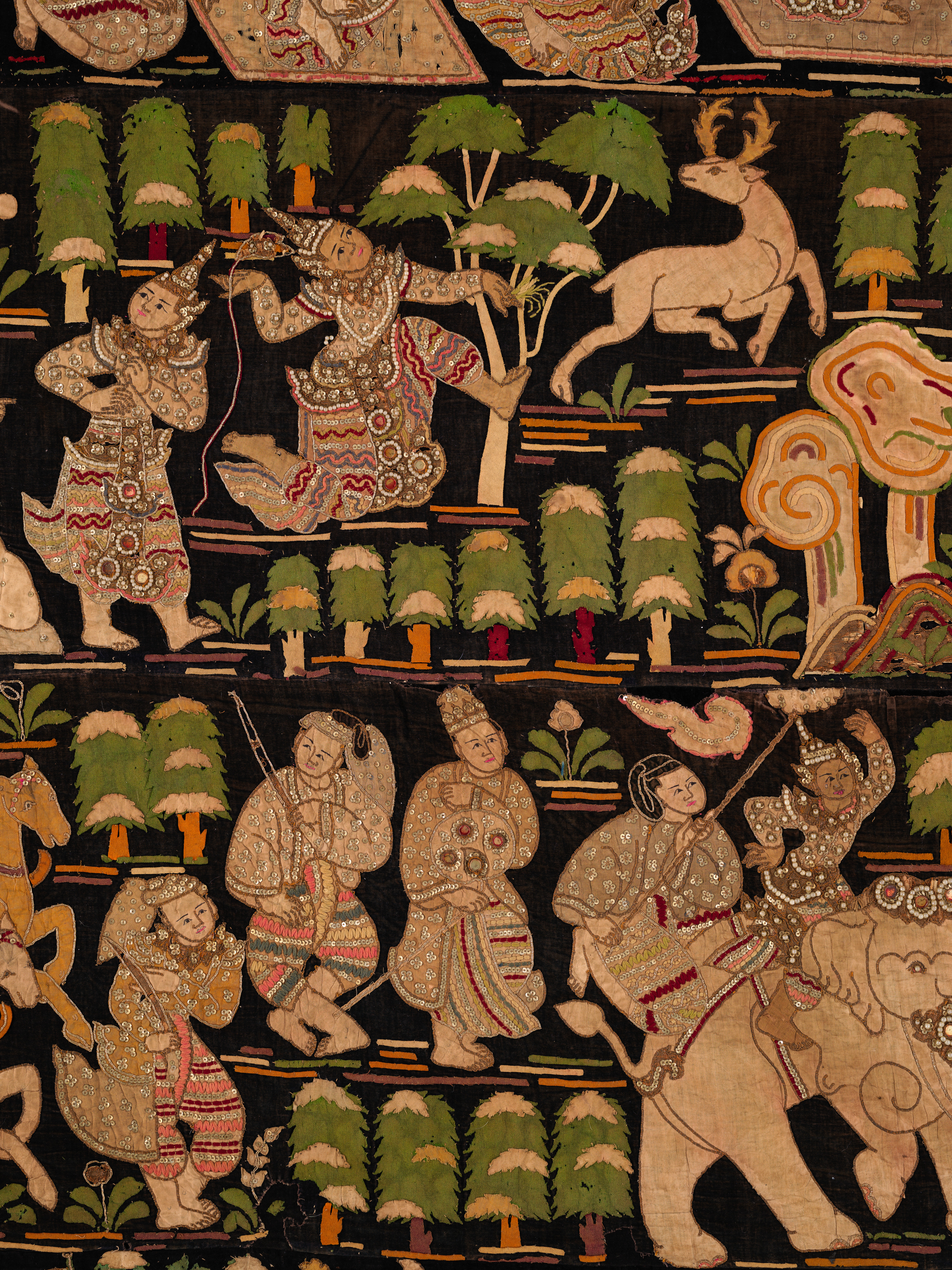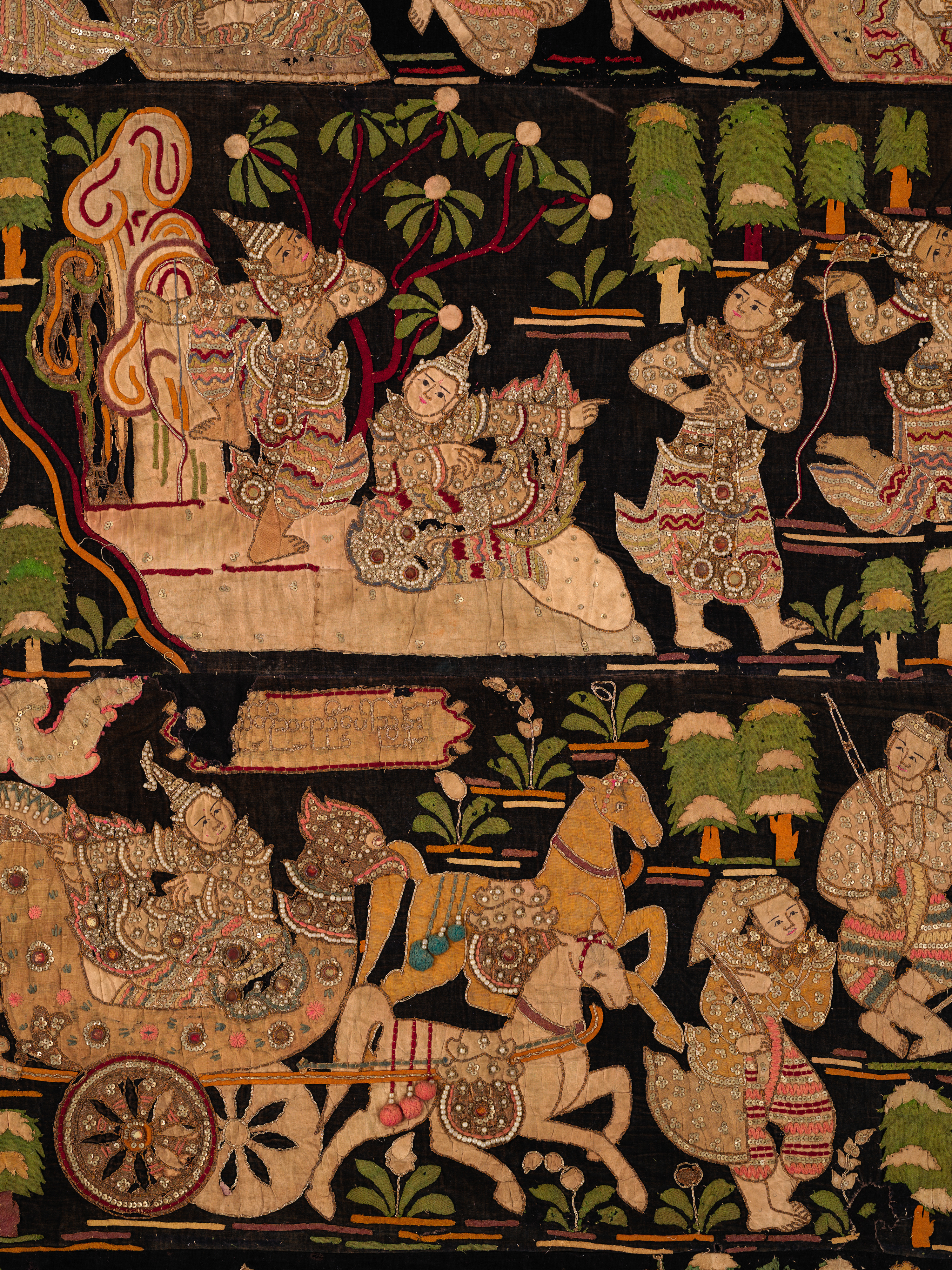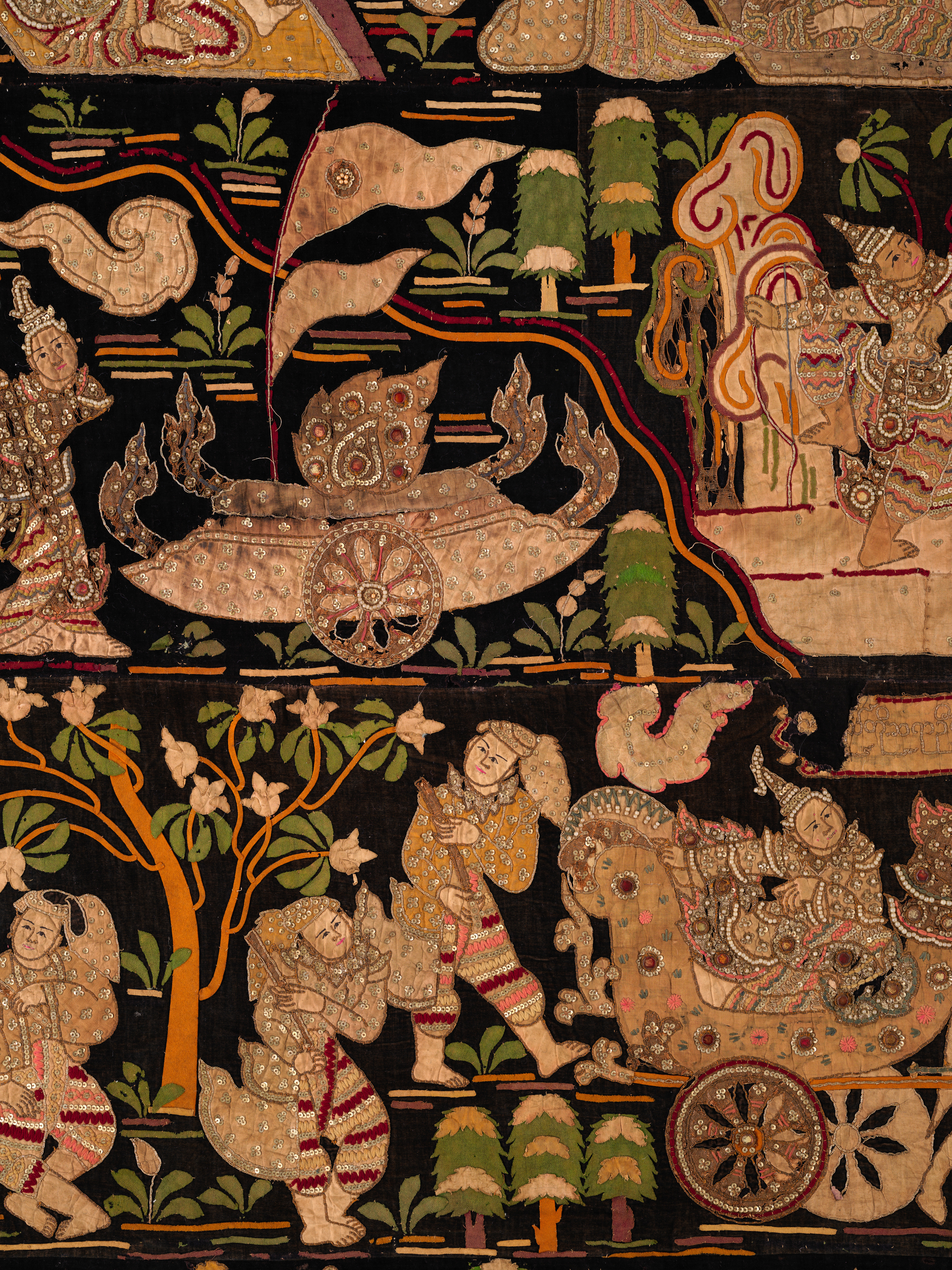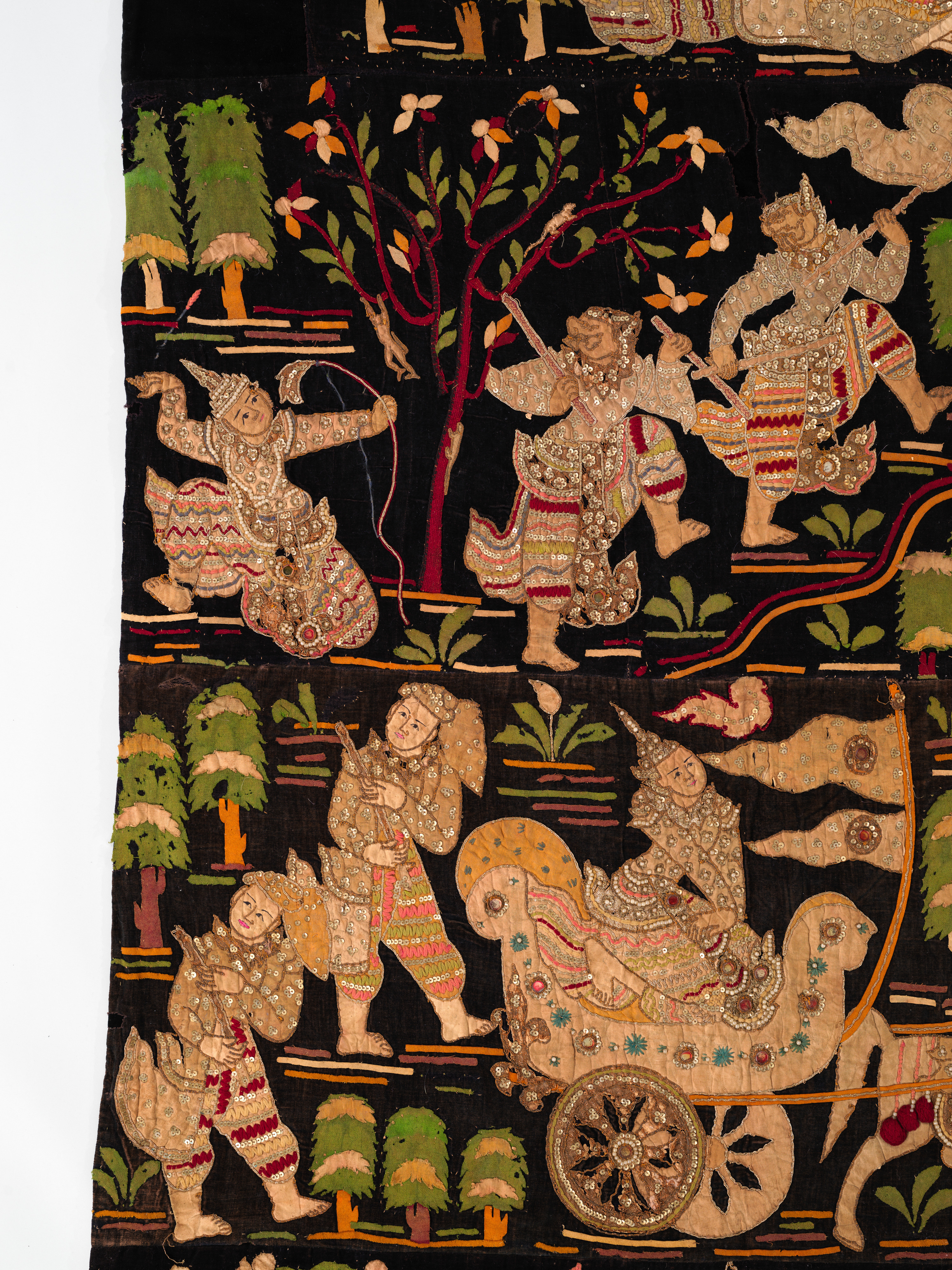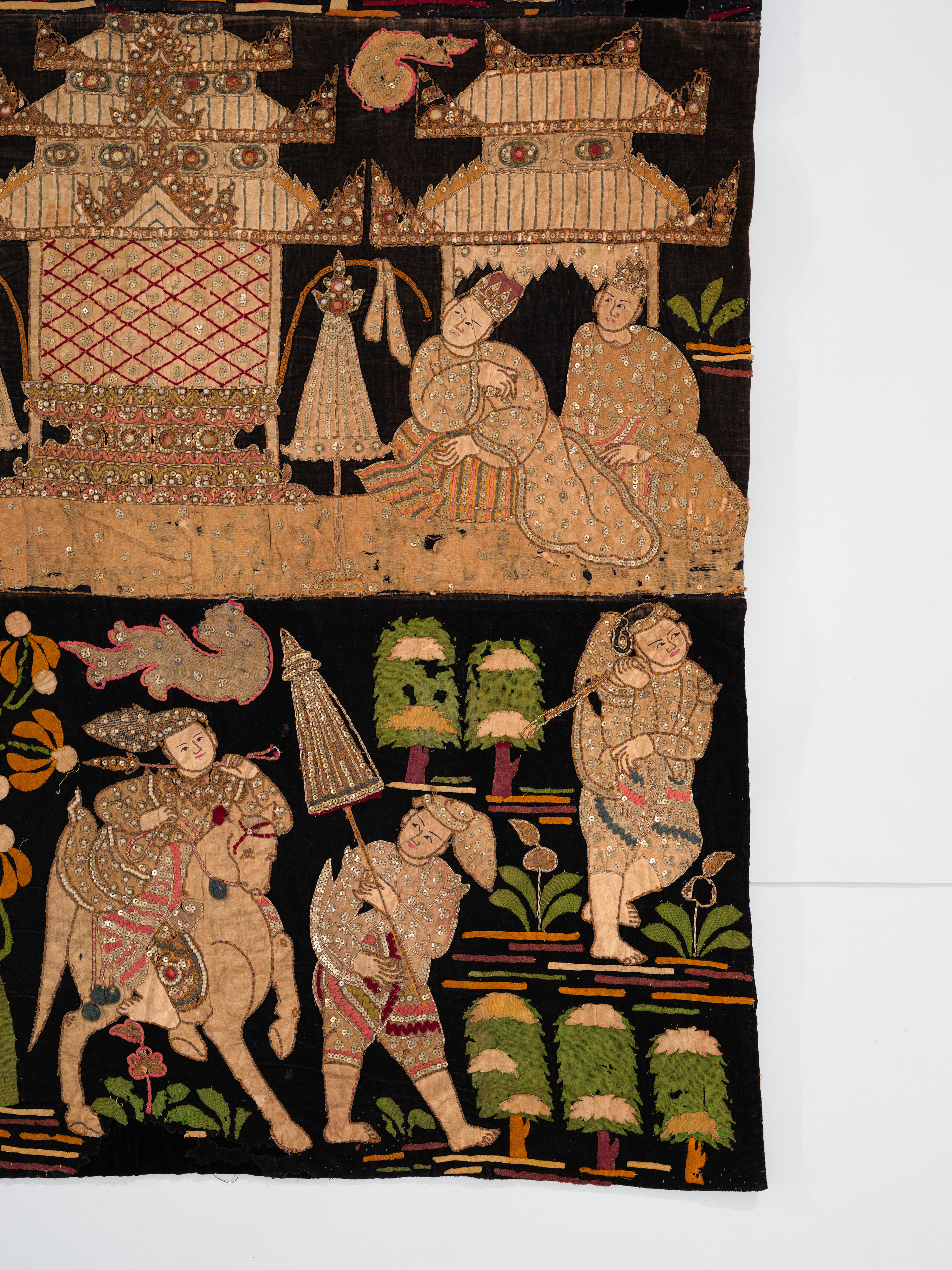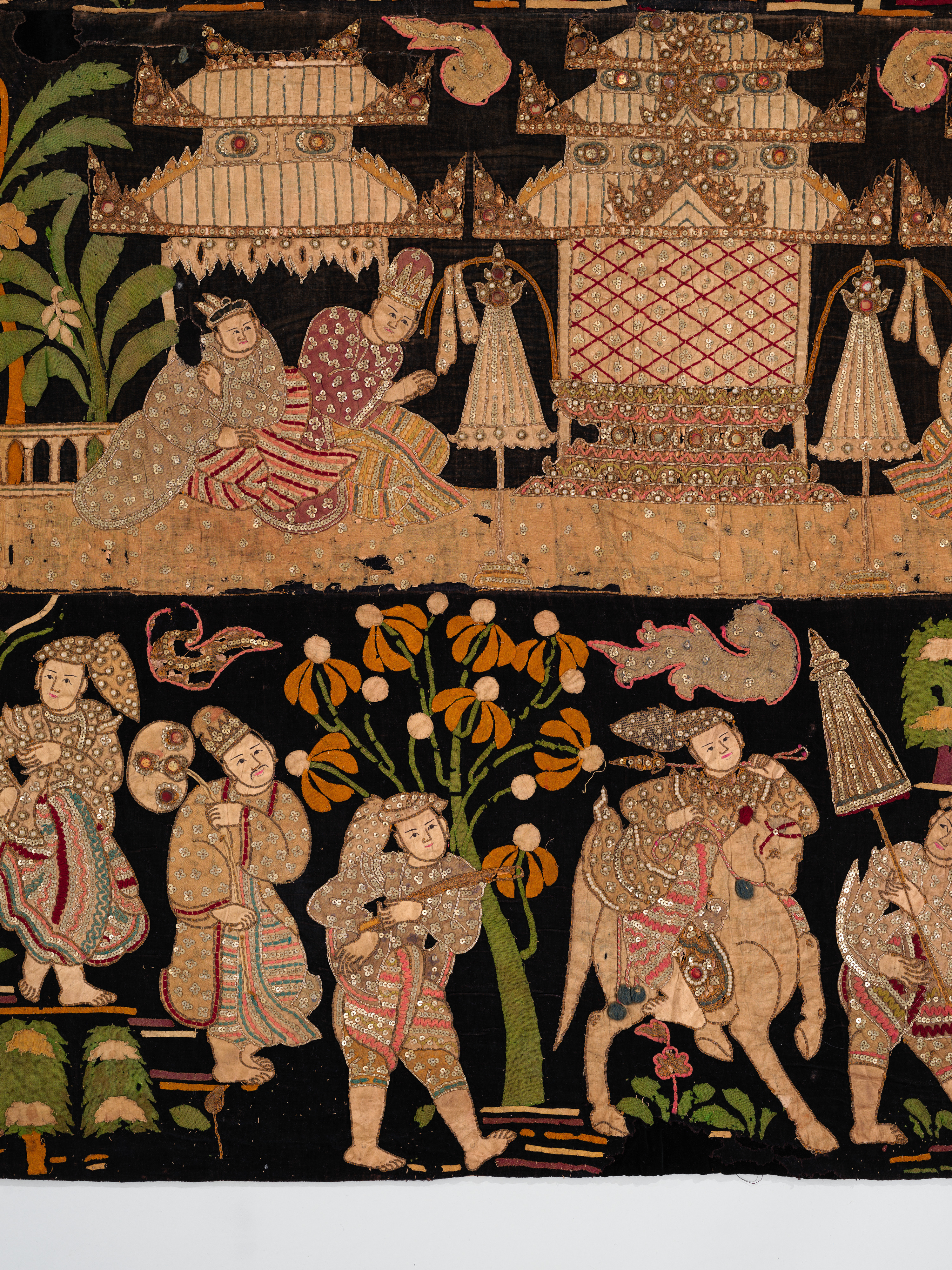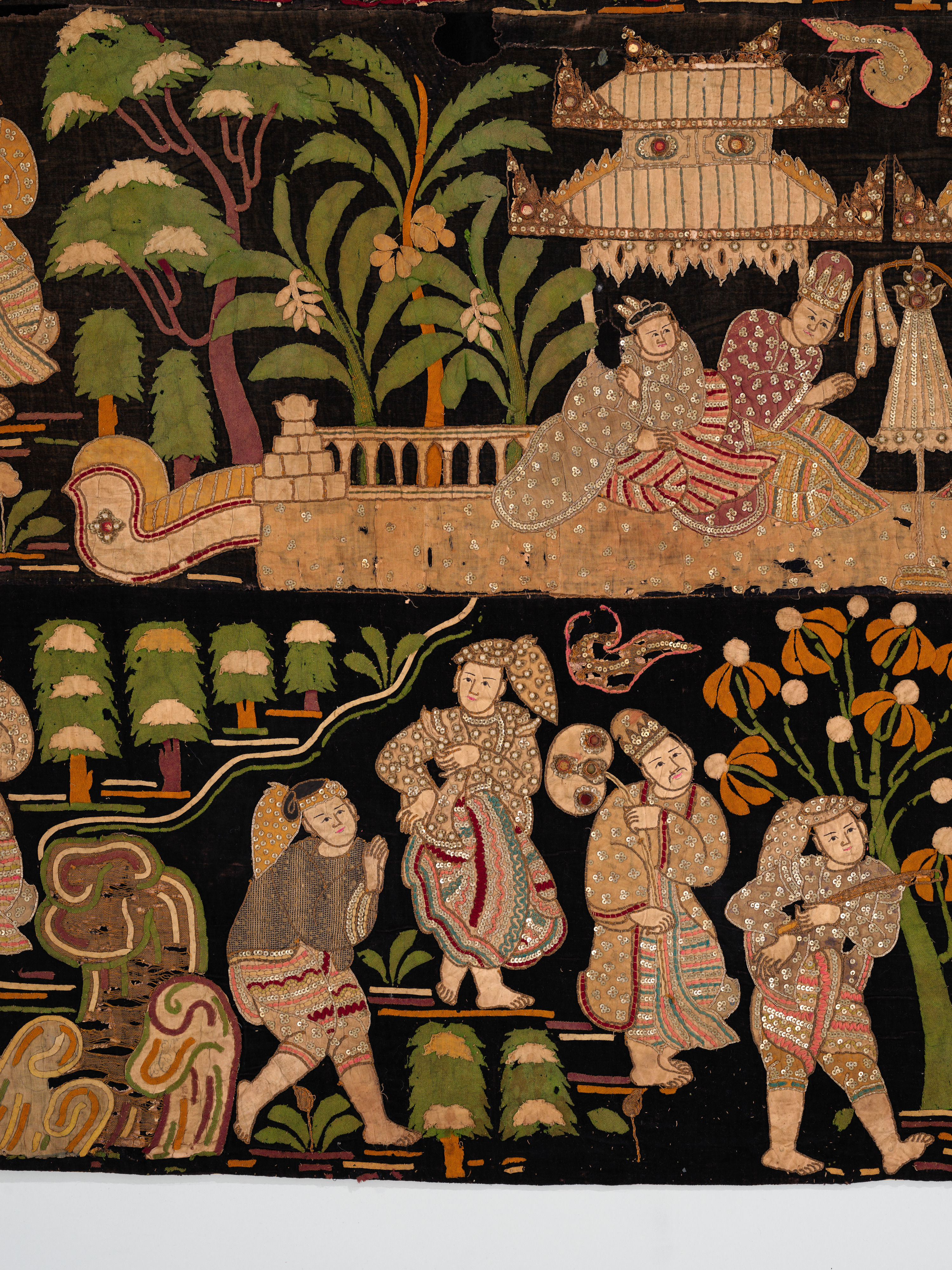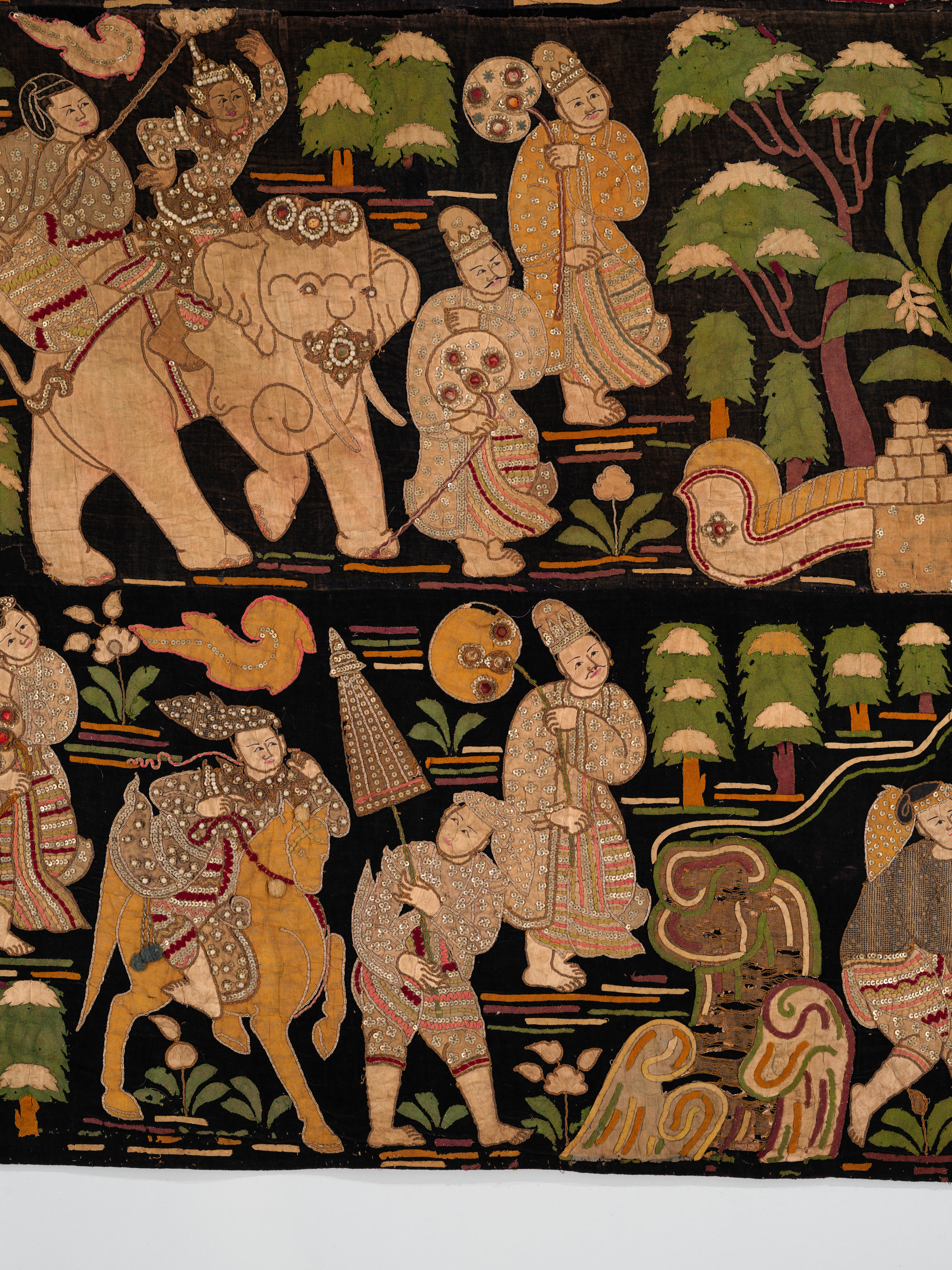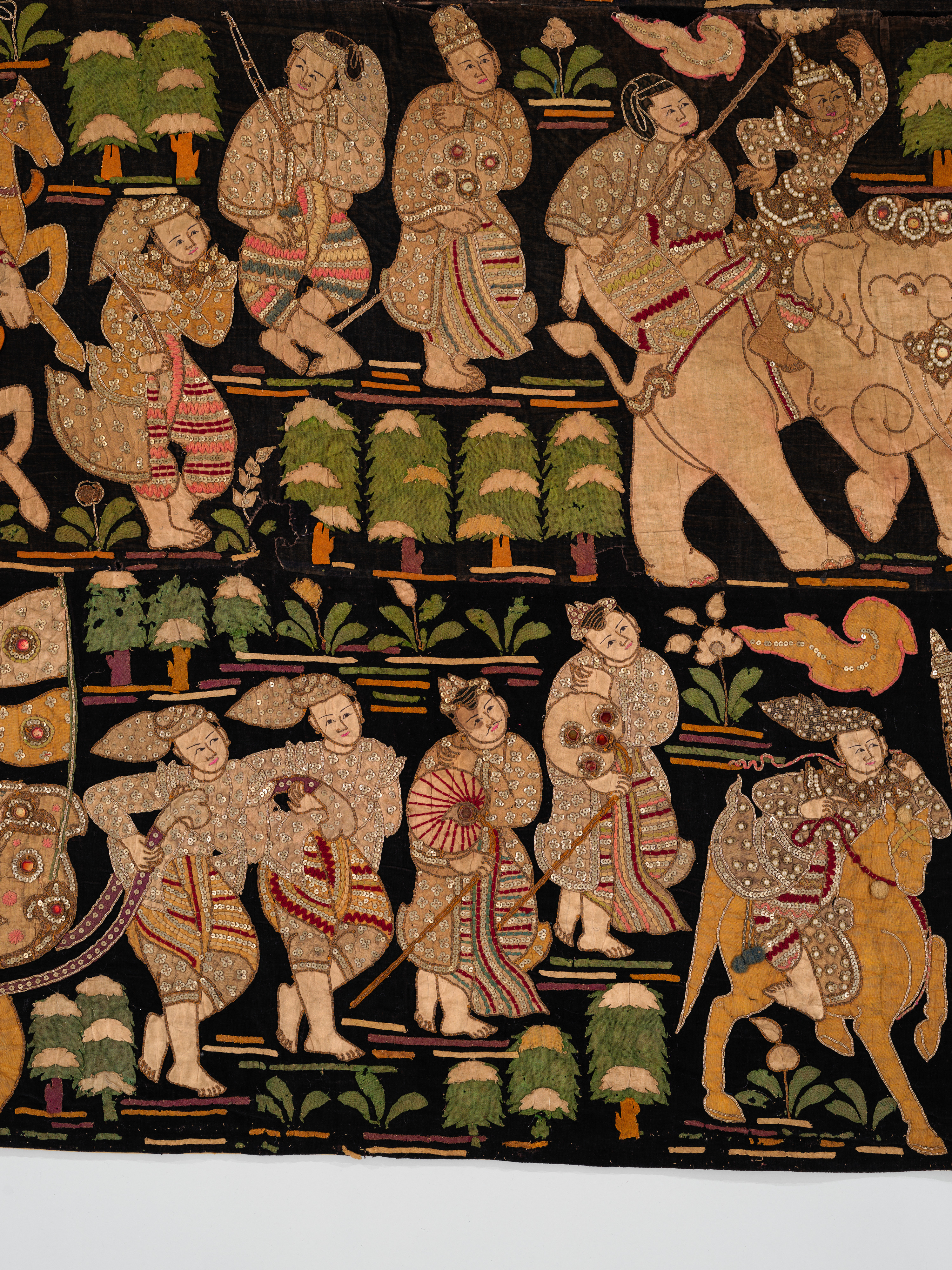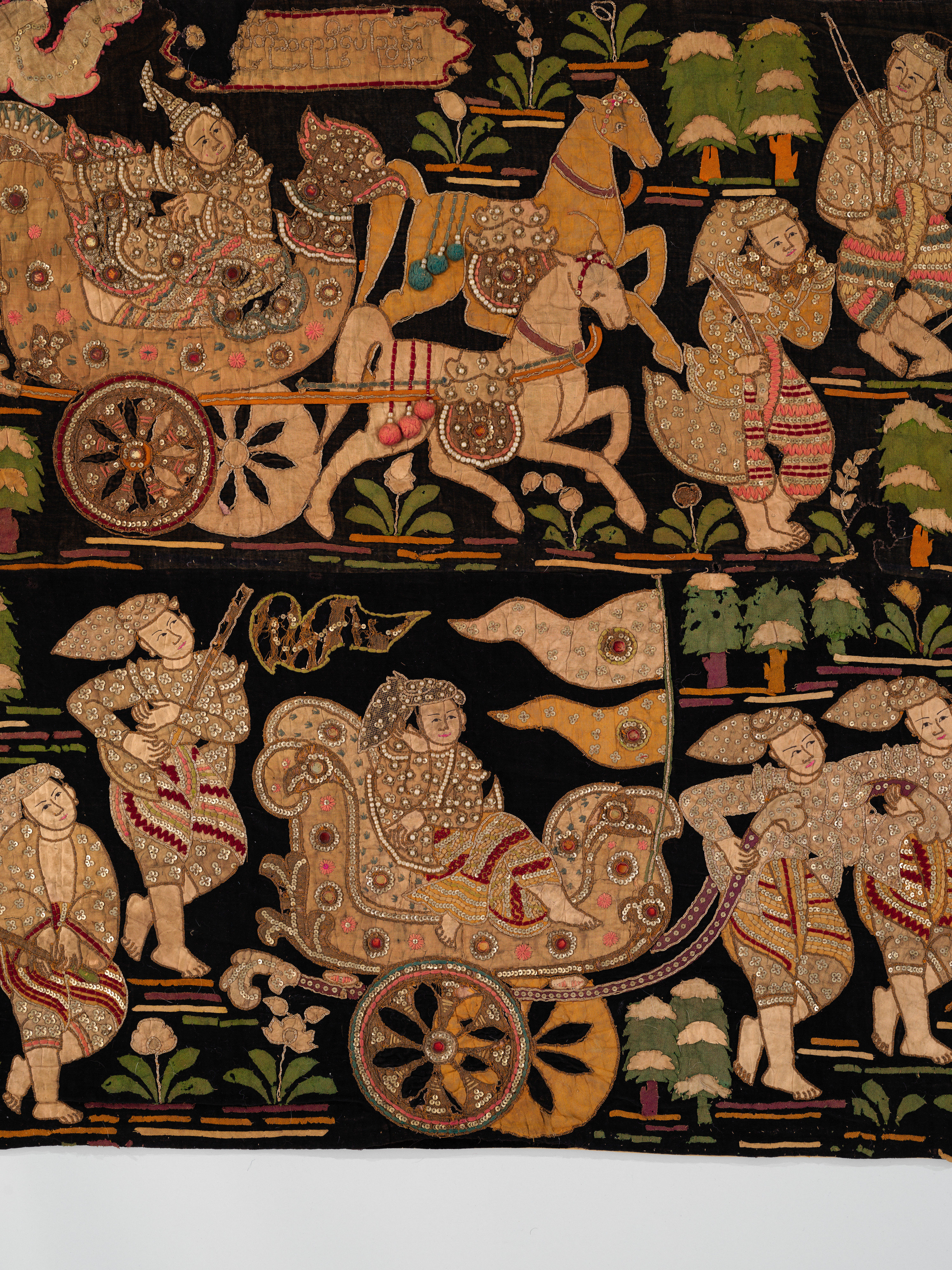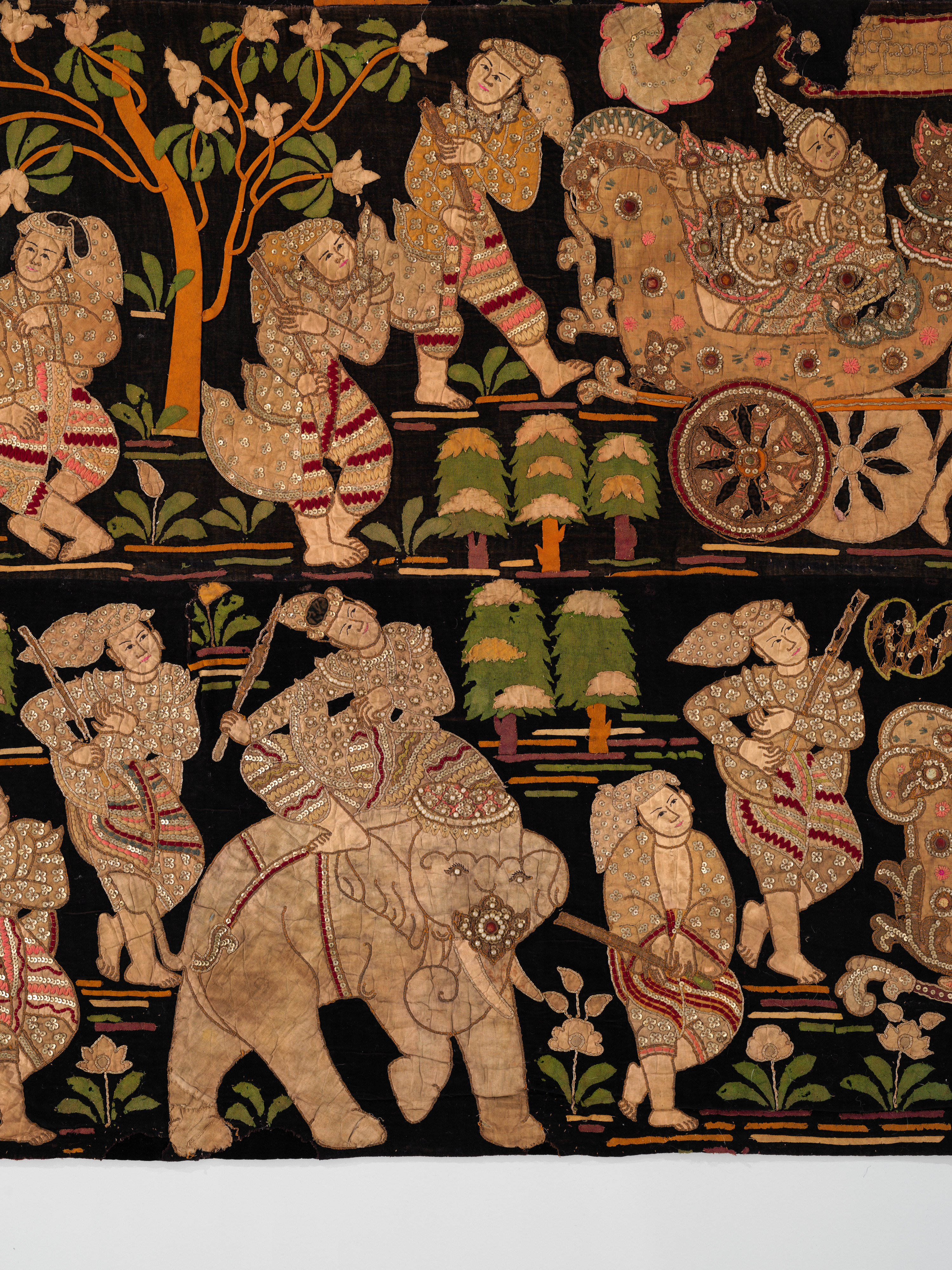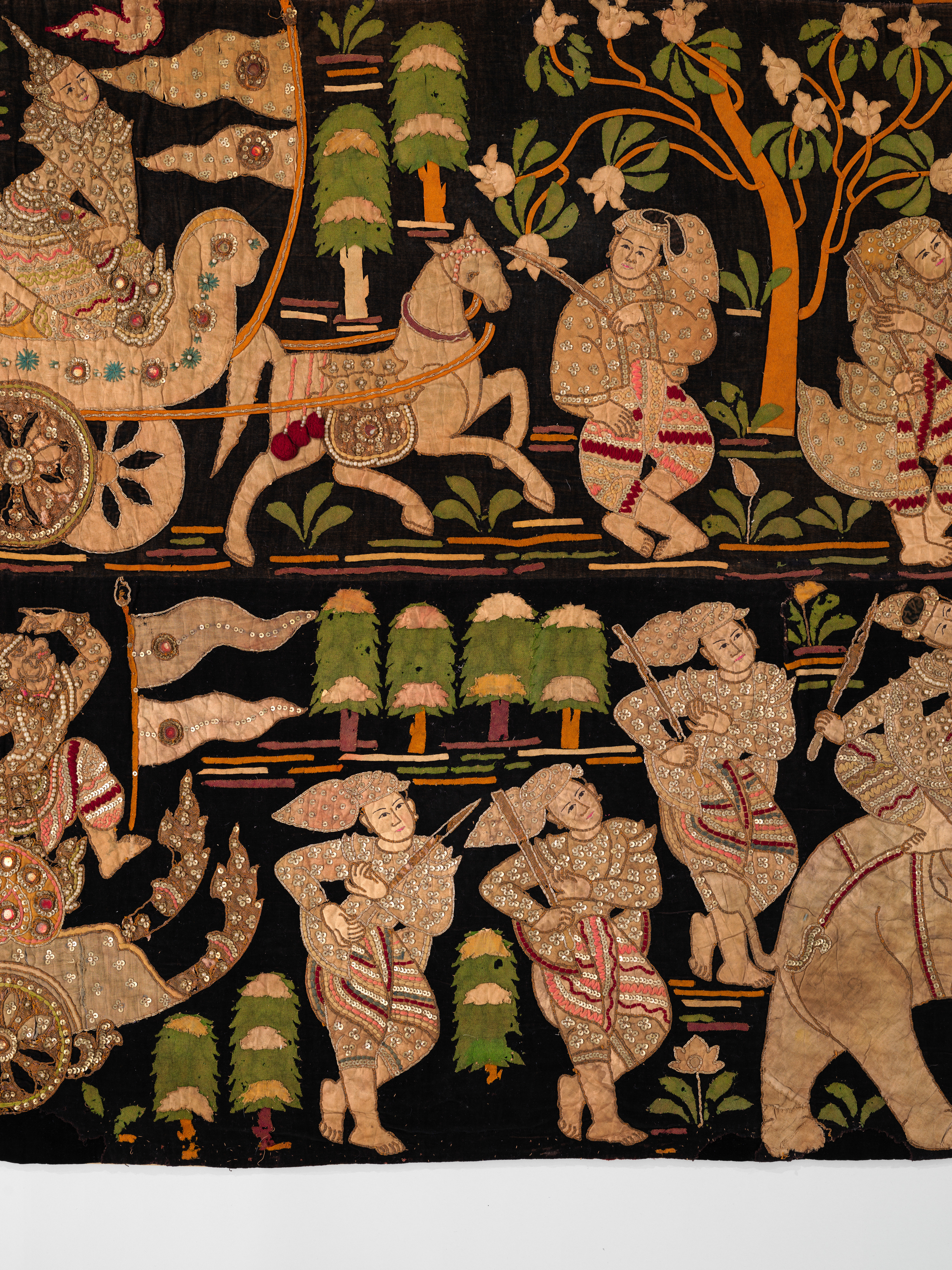Scenes from the Thiri Rama, the Burmese adaptation of the Ramayana
U Paw Hnyun Burmese
Not on view
This spectacularly large appliqué textile depicts scenes from the Burmese version of the Ramayana, the Thiri Rama. It belongs to a little-studied tradition of Burmese pictorial textile art that appears to have undergone a major revival in the final decades of the Konbaung dynasty, during the reigns of King Mindon (r. 1853–78) and his son, Thibaw Min (r. 1878–85), the last kings of Myanmar. These pictorial hangings became known as kalaga, which is an abbreviated corruption of the Burmese word kant-lant-kar, referring to a horizontal partition or screen. The scenes are inspired by the Burmese rendering of the Ramayana, which differs from both the Siamese versions from which it is immediately derived and from Valmiki's Sanskrit original. Rather than present a single narrative, however, the textile depicts selected highlights that focus on the most beloved moments in the narrative. The principal characters of the drama, Rama, Sita and Ravana, appear multiple times. The kalaga is inscribed as the work of ‘the respected master [artist] U Paw Hnyun.’
Due to rights restrictions, this image cannot be enlarged, viewed at full screen, or downloaded.
This artwork is meant to be viewed from right to left. Scroll left to view more.
